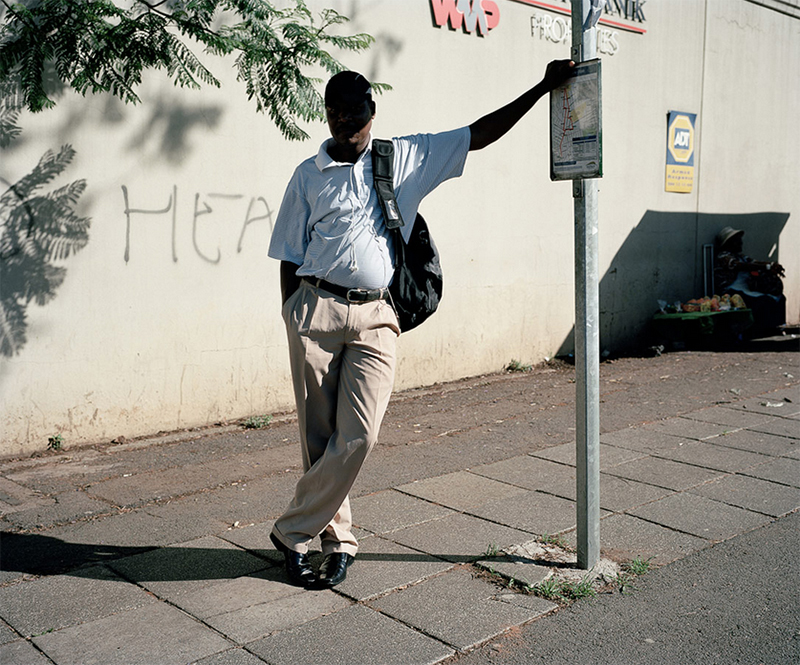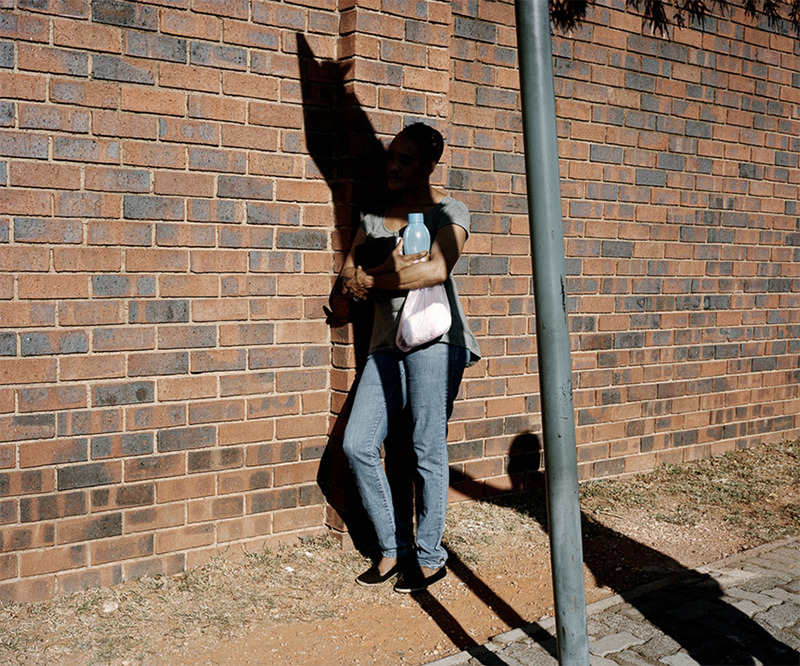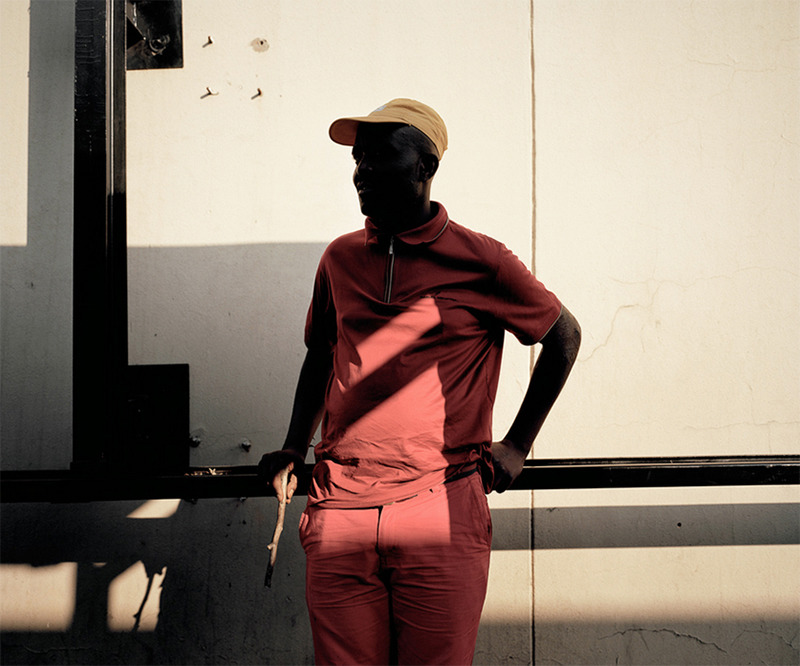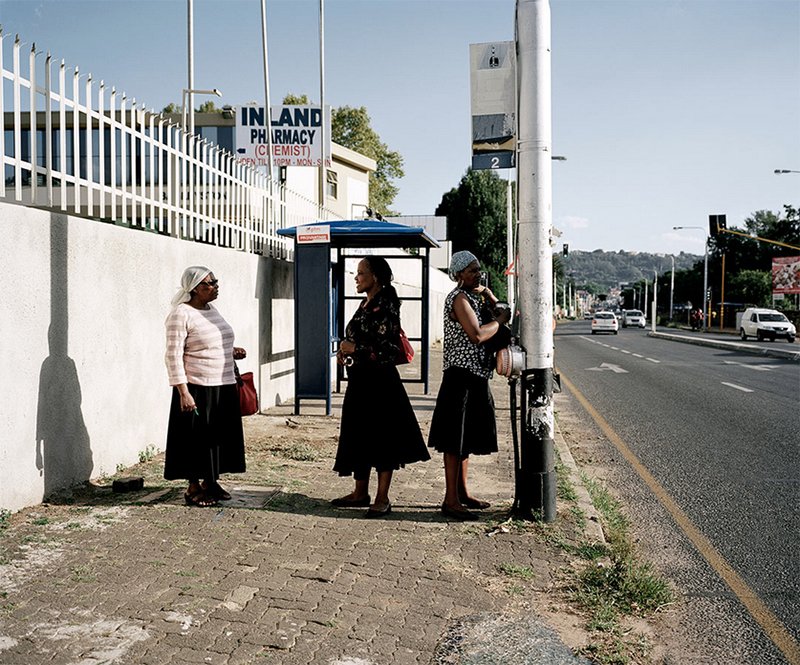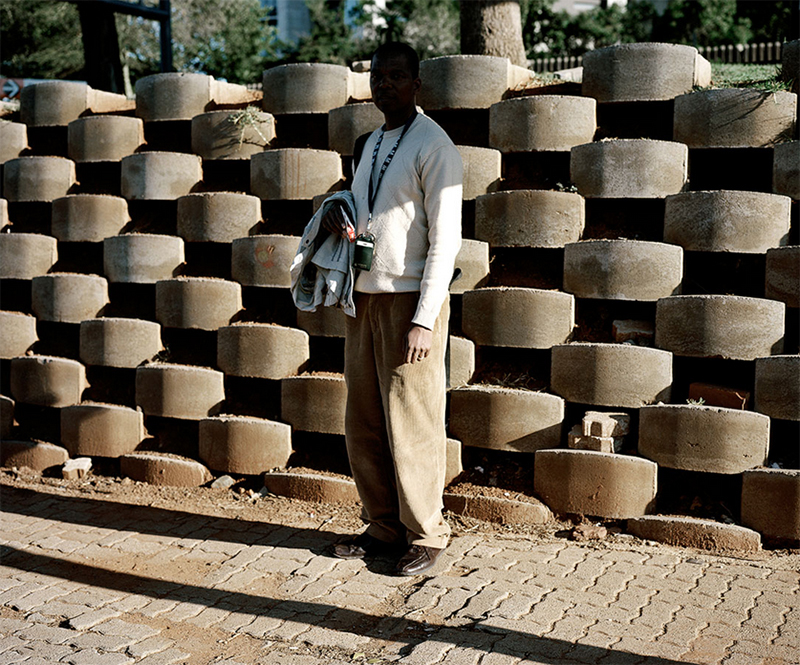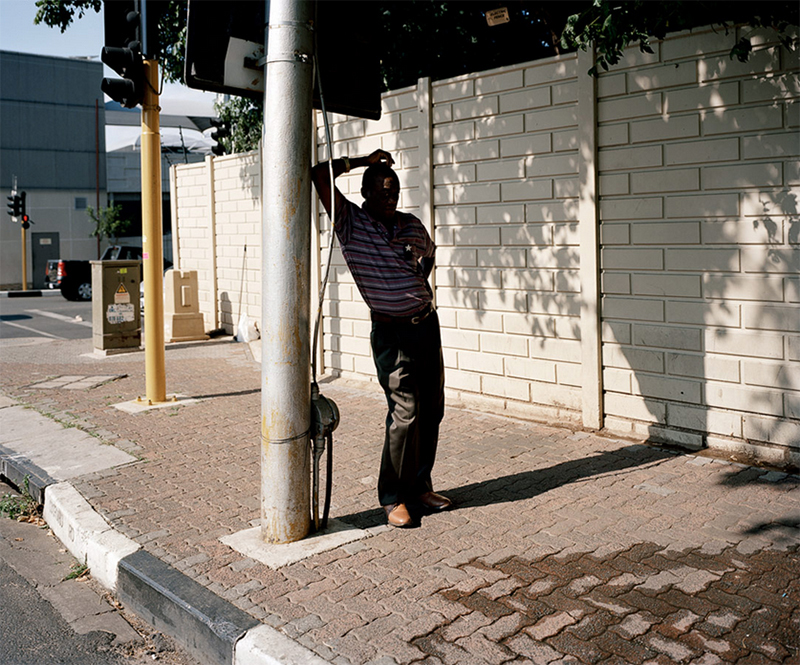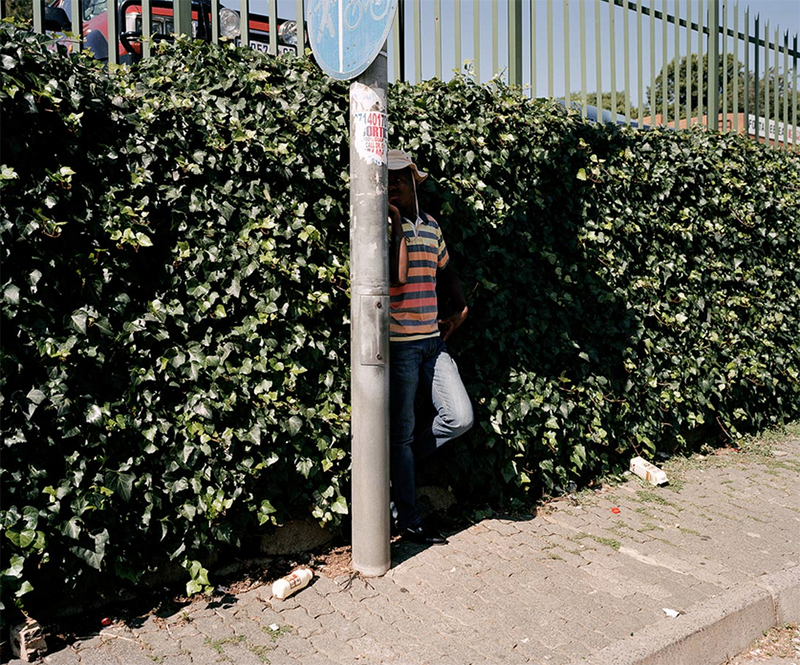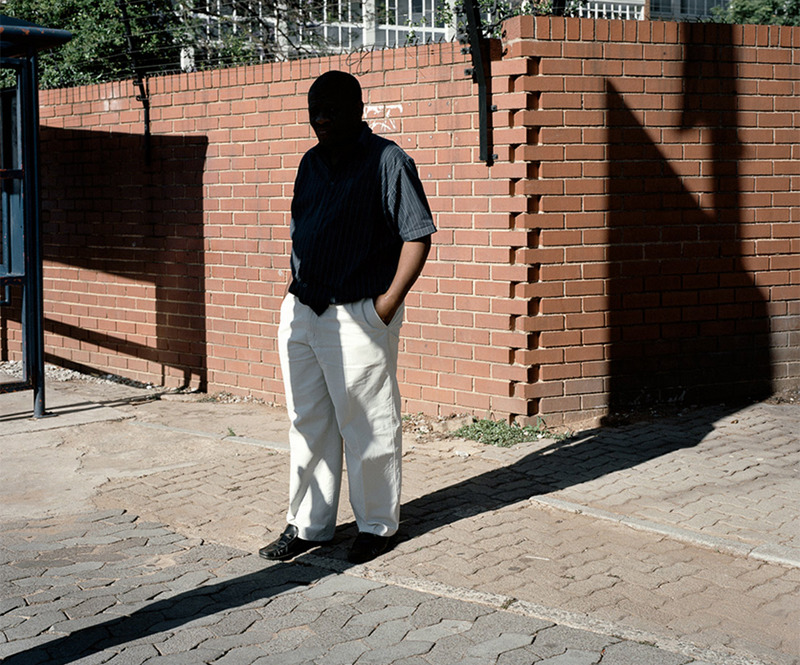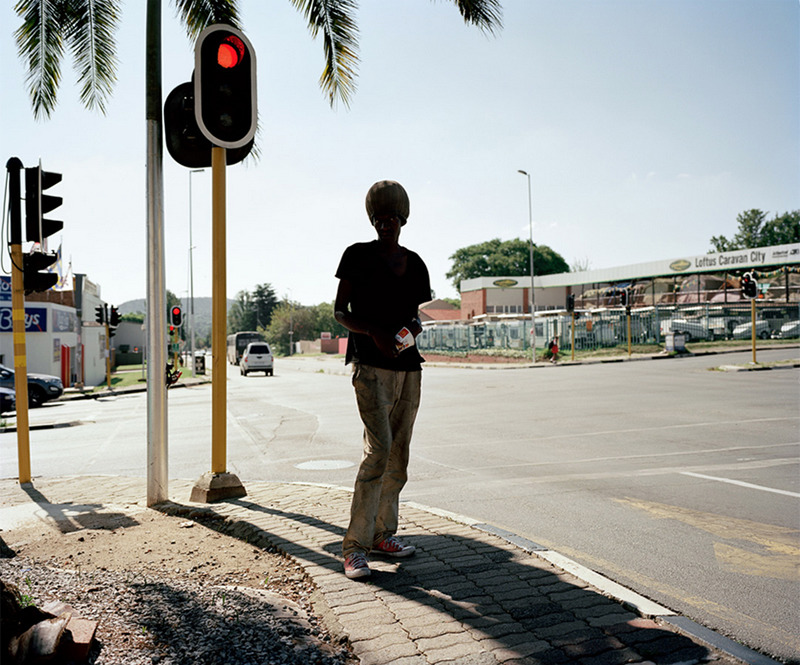Jason Larkin – Waiting
All images courtesy of the artist and Flowers Gallery
Familiar experiences are perhaps the most difficult to interrogate and to connect to the wider context in which they occur, precisely because habit makes it difficult to see this context for what it is. But, by looking again and more closely, it is possible to grasp the ways in which even the most everyday experiences are inflected by larger forces, as Jason Larkin subtly demonstrates with his series Waiting. Here the title is a plainly descriptive one, telling us more or less what the pictures show, but Larkin’s figures also inhabit a starkly lit space that often covers them in shadow; they become ciphers acting in a rather unspectacular social drama. In itself this concealment is an interesting strategy that belongs to some of the more ‘conceptual’ directions that so-called street photography has moved in over the last few years. Rather than just being caught in the midst of some action, then, the way in which these people are (photographically) seen also carries a specific import, one that alludes to the social order in which they participate.
It is the nature of modern cities that services and amenities tend not to be located within the communities where people actually live, but are spread out according to the often arbitrary seeming dictates of economic planning. The in-between time of waiting (and commuting) is a perfect metaphor for this decentred existence, as well as being one of its quintessential experiences. A further and perhaps more explicit sense of this context is also given by the space in the pictures, which, it’s worth noting, have all been made in and around Johannesburg. Quite often it is defined by a particular sort of architectural form, that of containment or defence. What is striking about the presence of these forms is the extent to which such urban spaces are now largely predicated on them, rather than their being merely imposed, and that the structures themselves (barriers or fences in various configurations) are for most part prefabricated units, indicating a concerted economy of control that goes nearly unseen. These seemingly marginal spaces reveal more about how a society is organised than its nominal ‘centre’ ever can.
White commuters are also notably absent from Larkin’s pictures and this can hardly be coincidental. While it’s obvious that social divisions skew along racial (and economic) lines, these ‘lines’ are, in themselves, really just a means of enforcing division rather than its principle cause. They do not arise spontaneously, but are the product of deeply-rooted structures by which elite groups seek to perpetuate their own advantage. With regard to South Africa’s history, then, the impression that Larkin’s pictures give, of a people in the shadows or pushed to the margins, and held at least temporarily in stasis, is certainly a resonant one. It is a reminder, too, that even if those forces shaping the social landscape are perhaps less immediately visible now than they were in the past, their effects still remain as tangible as ever and can be felt even in the most innocuous of settings.
Ahead of the official launch and with thanks to Photoworks and Fourthwall Books, we have a copy of Jason Larkin’s Waiting to giveaway!
Competition runs from 25-31 August 2015, details can be found on our Facebook page, good luck!
To purchase a copy, please visit Photoworks.

